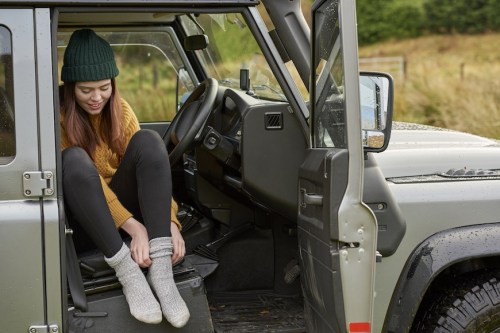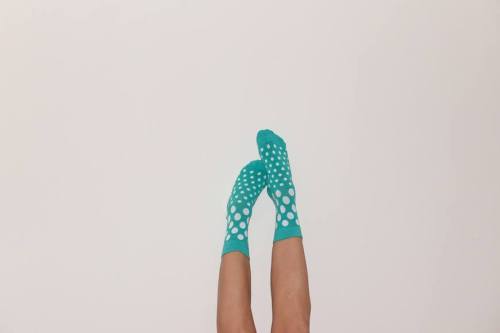Our editors independently select these products. Making a purchase through our links may earn Well+Good a commission
One foot doc says popping your blisters isn’t so bad after all
It's a universal truth that blisters are the worst (and very painful!). Here, an expert shares his tips on how to get rid of blisters.

Let me recount the ways I’ve gotten blisters recently: Hiking a 14-er in Colorado, wearing heels to drink champagne at the Veuve Cliquot Polo Classic, breaking in a new pair of boots for wintertime. It’s really a choose your own adventure when it comes to fluid-filled pockets that spring up on feet. And so without fail, I frequently find myself wondering A) how to get rid of blisters fast (no, like really,really fast) and B) whether or not it’s okay to pop them.
While I’ve always shied away from popping them in the past, opting for a cocooning method of blister repair—putting an entire container of Neosporin on them and using bandages with blatant disregard for how much bandages cost—I found out that might not be the best nor the fastest way to get rid of a blister. To save others from facing a blister-filled fate similar to my own, I spoke with Miguel Cunha, DPM, podiatrist at Gotham Footcare in New York to break down how to get rid of blisters fast (like, really, really fast).

First up, some very important information about blisters
While there are other ways that blisters come about, friction with the shoe is among the most common culprits. When you break in a new pair of boots or go on a grueling run, the constant rubbing of the foot with the shoe can cause the top layer of skin to detach from the other layers, Dr. Cunha explains.
This Parisian Skincare Brand Is Launching in the United States for the First Time—Here’s What a Derm Wants You to Know

We’re Calling It: Cleansing Balms Are the Face Wash of the Future—Here Are 3 to Add to Your Cart

This Is the One Product That Scarlett Johansson Always Keeps in Her Purse and on Her Bedside Table

Your body then fills in this new skin pocket with fluid, much like a pastry chef would fill a cream puff. (I know, ew, but also I stand by that metaphor.) The reason? Your body is trying to create a barrier to keep out germs and bacteria. Dr. Cunha says that this fluid is mostly water, with a splash of plasma and lymph. And while your body’s natural method for healing blisters is actually pretty genius, it results in an incredibly painful and sensitive area on the foot.
What to do when you get a blister
IDK about you, but my first instinct when I get a blister is to pop it. While many docs say that you should only pop when it becomes way too painful to stand it or when blisters affect mobility, Dr. Cunha sees no problem with it so long as you’re taking a ton of sanitary precautions, using a sterilized needle to poke the side, then gently squeezing the fluid out. “Once you’ve gotten rid of pressure. It’s going to feel better,” he says. But whatever you do, don’t de-roof the blister—AKA pull the skin off the top—because the underlying skin will be raw. Not only will that make it more painful for you, it’ll increase the chance of an infection. Obviously, this is the very reason many docs say not to pop them.
Now, Dr. Cunha says you’re gonna want to cover that bad boy in an anti-bacterial substance, such as Betadine ($16). “When the betadine goes through that hole that you poked into the blister things, one, it’s going to kill any bacteria. The second thing it’s going to do is dry out that rawness. The quicker that it dries out the rawness, the quicker your blister will heal and the quicker it’ll feel better,” he explains.
Since you don’t want to goop-up the blister, but rather dry it out, Dr. Cunha says to skip the Neosporin. “We have a normal hydration to our bodies. Whenever something is too wet, you want to dry it. Whenever something’s too dry, you want to wet it,” he says. So while Neosporin is great for something like a scab, betadine is much better for blisters because the underlying skin is wet and raw. He notes that any kind of astringent will also work to help dry out the blister, like vinegar for instance; however, pass over alcohol because it can add to the ouch factor.
Dr. Cunha says to douse your blister in betadine at least three times a day (though he notes that you can’t really do it too much), and of course put a bandage (or padded bandage which helps with walking discomfort) on it to minimize the risk of infection. He adds that you can also do a foot soak with Epsom salt and a tablespoon of betadine at night to help it heal even faster.
As for other options that will help your blister heal more quickly? Make sure you’re getting plenty of vitamins C and E, as these help your skin regenerate more quickly Dr. Cunha says. And, of course, sleep is also very important—that’s the time when your body does most of its healing, he adds.
Prevent blisters in the first place by adopting this genius hack for breaking in shoes. Plus, how to deal with three super common foot problems.
Sign Up for Our Daily Newsletter
Get all the latest in wellness, trends, food, fitness, beauty, and more delivered right to your inbox.
Got it, you've been added to our email list.







